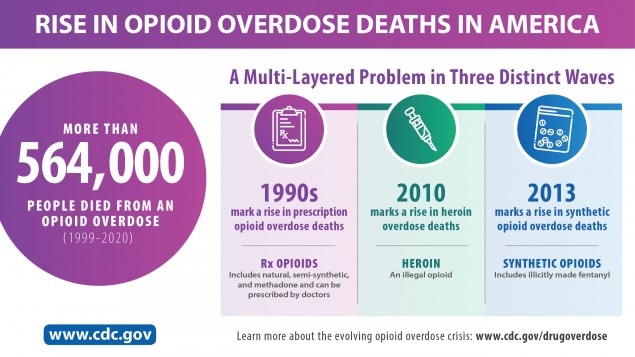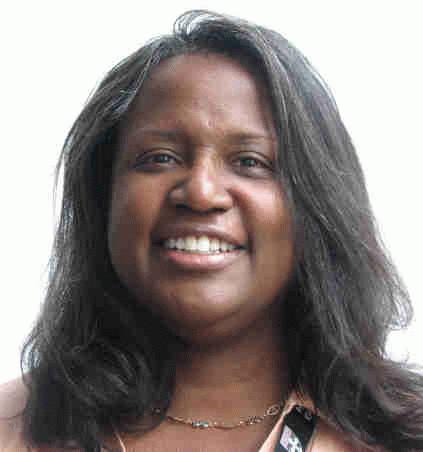Pharmacological treatments for opioid use disorder (OUD) and the prevention of opioid-related overdose are prescribed 80% more often to White patients, compared to Black patients, according to a new study published in the New England Journal of Medicine (NEJM) on May 11, 2023. (1).
Using Medicare claims data from 2016-2019, the study authors analyzed health information for more than 23,000 disabled people 18 years and older, as this specific population of Medicare beneficiaries are known to be disproportionately affected by opioid addiction. In fact, “estimates suggest that one in four opioid overdoses in the United States occurs in this population.” (2, 3) Amongst this group there were a total of 25,904 OUD-related index events defined as a nonfatal opioid overdose treated in the emergency department or inpatient setting, hospitalization with an injection drug use–related infection (e.g., acute hepatitis C, phlebitis, septic arthritis, skin or soft-tissue infection, or endocarditis combined with an OUD diagnosis in the previous 30 days), or inpatient or residential rehabilitation or detoxification care with a primary diagnosis of OUD or receipt of an OUD diagnosis in the previous 30 days. (1)
During the 180 days after the index event, study authors assessed whether the patient received a prescription for buprenorphine or naloxone within six months of that event. Buprenorphine is considered the gold standard therapy for OUD, and naloxone can reverse opioid overdose.
Study authors report that Black patients were less likely to receive any buprenorphine than White patients; and amongst Black recipients of buprenorphine, they received a lower days’ supply than White patients. One explanation offered is that “Buprenorphine prescription rates could have been dampened by regulations that at the time restricted who could prescribe the treatment drug, yet those restrictions were recently lifted,” said lead researcher Dr. Michael Barnett, an associate professor of health policy and management at the Harvard T.H. Chan School of Public Health in Boston. (2)
But for naloxone, “which has no such restrictions at all, we saw basically disparities of the exact same magnitude,” Barnett said. “There’s no reason why clinicians shouldn’t be prescribing this medication to people with overdoses, yet we saw a huge gap between white and Black.” (2) This is disheartening as overdose death rates (number of drug overdose deaths per 100,000 people) increased 44% for Black people in just one year, between 2019 and 2020. (4)
The study team also examined the number of patient-encounters with health care providers, and findings show that across racial groups, patients made a similar number of visits in the six months following an index event—indicating that racial inequalities in the receipt of treatment are not explained by low contact with care providers. (5) Barnett adds, “addressing the overdose crisis and racial disparities in addiction will likely require community-specific interventions that engage with minority populations and the clinicians who serve them to reduce stigma and bolster trust.”
For example, Screening, Brief Intervention, and Referral to Treatment (SBIRT) is an evidence-based system-level integrated care approach to identify, reduce, and prevent patterns of substance use that put the health of people at risk. Ideally suited as a community-specific intervention, SBIRT has three basic steps: (1) screening for level of substance use (alcohol and drugs), (2) providing a brief intervention to increase awareness of substance use risk and motivation to change behaviors, and (3) referring clients for further evaluation and treatment as needed for substance use disorders.
SBIRT can easily be implemented in community-based and faith-based organizations that provide “one stop service delivery” including programing for adults, adolescents, and families which include case management, behavioral health, ESL, domestic violence advocacy, food/SNAP assistance, food pantries, housing assistance, immigrant assistance, primary health care, and wellness programs, etc. Other settings might include school-based health clinics, student assistance programs, occupational health clinics, hospitals, and emergency departments.
Similar to the objectives of the SBIRT program funded by the Substance Abuse and Mental Health Services Administration (SAMHSA), cities and towns in Massachusetts could fund SBIRT initiatives to: (a) screen, identify and support clinically appropriate treatment services for non-dependent substance users and for people with substance use disorder diagnoses; (b) improve linkages among generalist community agencies performing SBIRT and specialist substance abuse treatment agencies; and (c) identify systems and policy changes needed to increase access to treatment in generalist and specialist settings. (6)
In 2022 the state of Massachusetts received $535 million from the opioid settlement funds. Under the terms of the Commonwealth’s approved State-Subdivision Agreement, forty percent (40%) of the funds will be directly allocated to the state’s municipalities to be spent on abatement strategies developed with input from the Opioid Recovery and Remediation Fund Advisory Council. (7) However, in order to have access to these funds for the purposes for which they are intended, they must first be “appropriated” by the legislative body of each municipality, as described in the Opioid Settlement Guidance published by the Massachusetts Association of Health Boards (MAHB) on Jan 29, 2023.
For a copy of the above guidance — click on Opioid Settlements Guidance Document 1.24.23-RV1.
References:
- Barnett ML, Meara E, Lewinson T, Hardy B, Chyn D, Onsando M, et al. Racial Inequality in Receipt of Medications for Opioid Use Disorder. N Engl J Med. 2023;388(19):1779-89.
- Thompson D. Among People at Risk of Opioid Overdose, Black Patients Much Less Likely to Get Treatment. Health Daily: US News & World Report, Accessed 11 May, URL: https://www.usnews.com/news/health-news/articles/2023-05-11/among-people-at-risk-of-opioid-overdose-black-patients-much-less-likely-to-get-treatment; 2023.
- Meara E, Horwitz JR, Powell W, McClelland L, Zhou W, O’Malley AJ, et al. State Legal Restrictions and Prescription-Opioid Use among Disabled Adults. N Engl J Med. 2016;375(1):44-53.
- Kariisa M, Davis NL, Kumar S, Seth P, Mattson CL, Chowdhury F, et al. Vital Signs: Drug Overdose Deaths, by Selected Sociodemographic and Social Determinants of Health Characteristics – 25 States and the District of Columbia, 2019-2020. MMWR Morb Mortal Wkly Rep. 2022;71(29):940-7.
- Brownstein M. Substantial racial inequalities despite frequent health care contact found in treatment for opioid use disorder. Press Release:. Boston: Harvard T. H. Chan School of Public Health, accessed 2 June at URL: https://www.hsph.harvard.edu/news/press-releases/substantial-racial-inequalities-despite-frequent-health-care-contact-found-in-treatment-for-opioid-use-disorder/; 2023.
- Bray JW, Del Boca FK, McRee BG, Hayashi SW, Babor TF. Screening, Brief Intervention and Referral to Treatment (SBIRT): rationale, program overview and cross-site evaluation. Addiction. 2017;112 Suppl 2:3-11.
- Testa M. Appropriation of Opioid Settlement Funds. In: Boards MAoH, editor. Legal Guidance, Opioid Settlement Guidance. Wellesley, Massachusetts2022.
About the Author: Dr. Linda Marc is a consultant with expertise in the implementation of interventions for the prevention and treatment of opioid use disorders (OUD). She is the former National Implementation Director of a $21.3 million HRSA-funded initiative that implemented Buprenorphine Treatment, and Screening, Brief Intervention, and Referral to Treatment (SBIRT). Dr. Marc is currently CEO & Chief Science Officer of Behavioral Science International, LLC a public health consulting firm based in Massachusetts, and concurrently a core faculty member in the Quantitative Methods Program in the Department of Biostatistics at the Harvard T.H. Chan School of Public Health. She can be reached at <lindamarc@behavioralscienceintl.com> to consult on the implementation of prevention and treatment interventions for OUD.






0 Comments